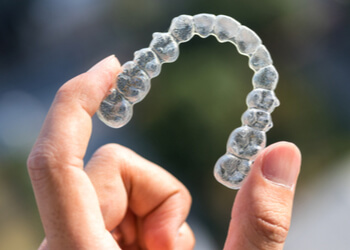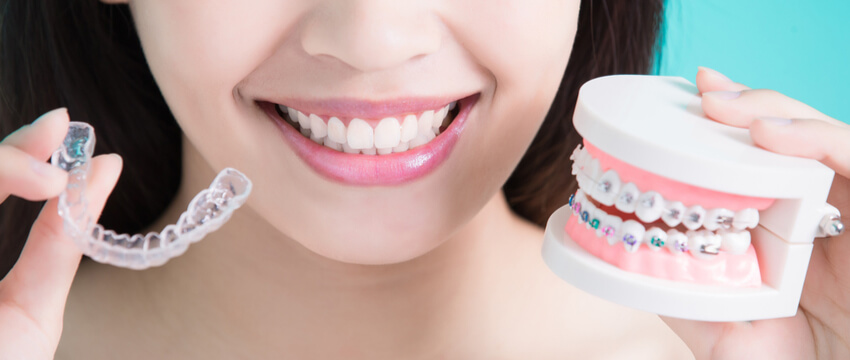If you’re straightening your teeth, you’re probably faced with a dilemma: Invisalign vs braces. At Dental 266 we are committed to educating our patients so they can make informed decisions.
Weighing up your options between braces vs Invisalign ultimately means you are choosing between traditional metal braces that do the job but are more noticeable, and orthodontics that are more expensive but aren’t noticeable to other people.
How Do Orthodontic Braces Work?
Both traditional braces and Invisalign work on the same principle: by applying pressure to move crooked teeth into place. How they achieve this is slightly different.
How Braces Work
Traditional orthodontics consist of a system of wires and brackets that work together to push your teeth into straighter positions. The wires and brackets are made from metal and can be seen on the surface of your teeth. As your teeth move into the correct positions, the way the braces were wired together no longer applies the same pressure, and they need to be adjusted to suit your teeth’s new positions.
How Invisalign Works
Invisalign aligners are slotted over the front of your teeth and they also apply gentle pressure to the teeth. At the beginning of your treatment plan your dentist will plot the new positions your teeth will move into over the course of your treatment, and at each milestone you will be given a new set of aligners. This happens every two weeks.
Invisalign Vs Braces – Which Is Better?
Every patient has a different set of requirements and so the best solution for you will depend on your personal circumstances. Your dentist will discuss whether braces vs Invisalign will provide the most effective straightening solution for you.
Here are some of the criteria you could use to make a decision:
Is it important to you if the orthodontics are visible to other people?
If this is a major criterion for you, Invisalign would probably suit your needs better.
Is budget or final cost a deciding factor for you?
If you need to be as cost effective as possible with your treatment traditional metal braces offer the most affordable treatment options.
How old are you?
Clear aligners are best suited to older teenagers and adults because they require a high level of care and maintenance. If they are not maintained properly they can stain. Children and younger teenagers usually do better with traditional metal braces.
Will it bother you to eat with braces?
Invisalign can be removed when you eat, and this can make a big difference to your quality of life, particularly for older patients. For older patients, being able to remove their clear braces when eating or brushing makes a big difference in deciding to have braces vs Invisalign.
How complex is your case?
If your teeth are severely crooked, or if you have a very misaligned jaw, then Invisalign may not work for you. In some cases traditional metal braces still offer the best straightening solution and, even if your appearance is very important, if Invisalign won’t achieve the treatment goals, your dentist may make a different recommendation.
Braces vs Invisalign
Traditional metal braces are suitable for use in all cases. Even if you have multiple issues that need correction, metal orthodontics will help you to achieve a straight smile. Today’s metal braces have improved a lot over the last few decades and patients now have more options to choose from than ever before.
Not only have traditional braces been optimised for comfort, patients can choose between ceramic braces and lingual braces, which achieve the same degree of correction, but are much less noticeable.
If you want to be finished with your treatment in a shorter time frame, metal braces may give you a more predictable end result.
Invisalign vs braces
On the other hand, some patients find metal to be uncomfortable compared with other orthodontic solutions, and find eating a bit stressful.
If you require minor corrections, or are an adult who doesn’t want to show a smile of metal wires, then Invisalign could be the right choice for you. Adults who practice good dental hygiene and are disciplined at maintaining their recall appointments may find Invisalign the best solution.
To find out more about braces vs Invisalign and whether clear aligners are the answer you need, please contact us for the closest available appointment: (02) 9051 0600.






